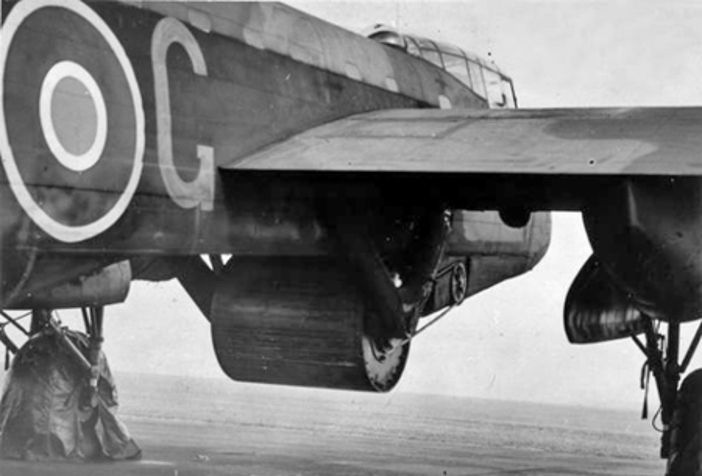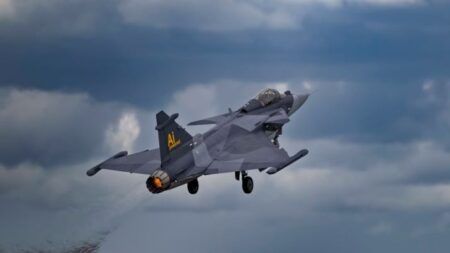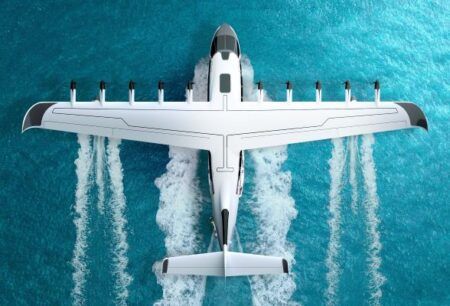Sir Barnes Wallis was a genius engineer who designed a very special bomb during World War II. The idea was that it would bounce across water and destroy German dams along the Ruhr Valley, causing massive flooding and damage to water and hydroelectricity supplies.
Partly thanks to the 1955 film The Dam Busters, the story behind Operation Chastise, which took place on May 16 and 17 in 1943, has become a familiar war time tale. But Wallis’s actual working calculations were lost (fittingly perhaps, in a flood in the 1960s). So what do we know about the complex science behind the bouncing bombs?
We know that the Germans considered their dams to be a potential target for their enemies, and placed torpedo nets in front of the structures to protect them. And to bust a dam, Wallis realised that peppering it with lots of small bombs wouldn’t work. It would be the difference between throwing a handful of sand at a window, and then doing the same with a rock.
Wallis figured that to do serious damage, a single four tonne bomb had to be detonated right up against the dam wall at a depth of about 30ft below the water. In those days, high altitude bombing accuracy wasn’t good enough to deliver such a bomb bang on target. The idea of bouncing it across the water towards the dam like a skimming stone was inspired.
In early experiments a few things became clear. First, for the bomb to bounce it had to be spinning – with backspin. Just like that a delicate backspin dropshot in tennis, which causes the ball to hover just over the net.
Wallis worked out that a bomb with backspin would be levitated by what is known as the Magnus effect countering the downward pull of gravity and ensuring that it struck the surface of the water gently. If the bomb hit the water too hard, it would detonate prematurely, causing damage to the aircraft above, but no damage to the dam.
Spin therefore meant that the bombs could be delivered from a manageable height. Flying at 60ft was already dangerously low, but without backspin the Lancaster bombers would have to have flown even lower and faster.
In Wallis’ earliest experiments he worked with marbles and golf balls and it was obvious that his bomb would be spherical. But because it was easier to manufacture cylindrical bombs, a spherical wooden casing was strapped to the cylinders to make them round.
However, when scaled up to full size, the casing on the spherical bombs would break apart on impact with the water. It didn’t take long to establish that the spherical casing was unnecessary and that the bare cylinder would bounce just as effectively.
Spin doctor
Unlike a sphere however, cylinders will only bounce if they bounce straight. This is the second good reason for spinning the bomb, because spin keeps the axis of the cylinder horizontal so that it hits the water squarely. Just like for the spinning planet Earth, the gyroscopic effect of the spinning cylinder stabilises the axis of spin.
Wallis found yet another key benefit of backspin. The bomb couldn’t just smash into the dam wall at 240mph, as it would detonate prematurely and do no significant damage. So he made sure the bomb landed just short of the dam – but because it was still spinning, it curved down gently towards the dam wall. By the time it reached the required depth it was right up against the dam where it would cause maximum damage.
Finally, Wallis needed to know how much explosive to use. He did small-scale tests on models and then worked out how to scale up the amount of explosive to deal with a dam which is 120ft high, and ideally would have loaded his bombs with 40 tonnes of explosive. In the event (there’s only so much one plane can carry) he could only use four tonnes, so as well as the dark conditions, low altitude and enemy fire, precision was key.
Barnes Wallis and others watch a practice Upkeep bomb strike the shoreline at Reculver, Kent.
(For our own bouncing bomb experiment in 2011, we found that 50 grams of explosive would completely demolish a 4ft dam, so our 30ft version would need 160kg. We used 180kg just to be sure … and it was totally wrecked.)
Following trials on water in Dorset and Kent, the actual raid took place in the early hours of May 17 1943, with 19 Lancaster bombers flying out of RAF Scampton in Lincolnshire. After a three hour flight, the first plane lined itself up on the Möhne dam, flying at 240mph and at that dangerously low altitude of 60ft.
The bomb was released about half a mile in front of the dam, bounced five or six times and sank just short of the wall. At the required depth of 30ft the pressure of water triggered the explosion right next to the dam wall. In all, five planes had to drop their bombs before the first dam was breached.
The raid was dangerous, many lives were lost, and its effect on the course of the war is still debated. One thing we can surely agree on however, 75 years later, is that Wallis is rightly remembered as a genius engineer.
This article was originally published in The Conversation. Read the original here.





